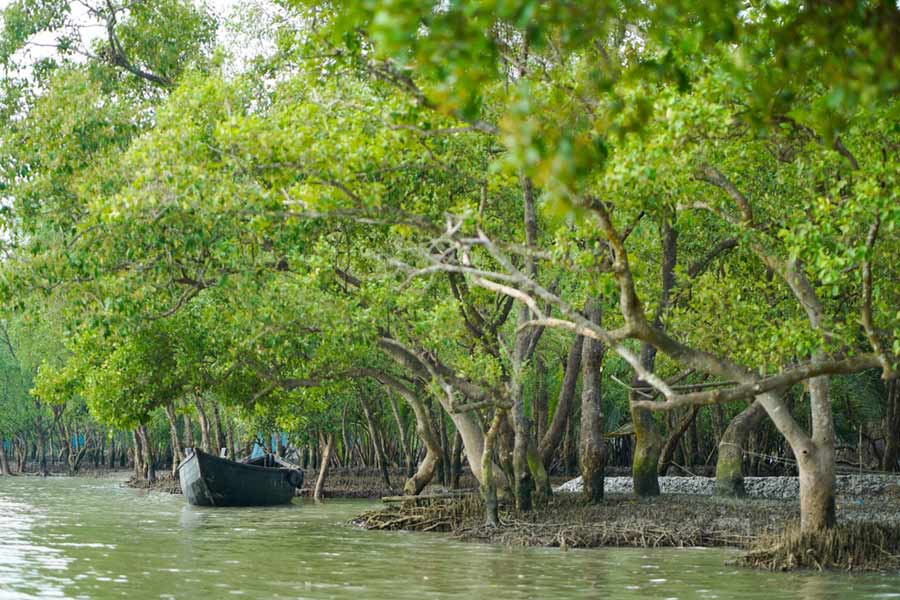A private sector-supported project has been taken up to restore 4,500 hectares of degraded mangroves in West Bengal's Sundarbans, an official said on Tuesday.
The programme also seeks to create sustainable economic opportunities for villages in the Sundarbans, the world's largest mangrove ecosystem.
Senior officials of project partners EcoAct and Meensou India are currently on a visit to the restoration sites and engaging with communities in the South 24 Parganas district of the state.
The project is being implemented under the Verified Carbon Standard (VCS) programme which is the world's most widely used greenhouse gas (GHG) crediting scheme.
"The Sundari Mangroves Project to restore 4,500 hectares of degraded mangroves in India's Sundarbans and it demonstrates how carbon finance can drive effective climate action when it genuinely empowers local communities. By ensuring benefits flow directly to communities, we are seeing how private sector support can create real opportunities for those who depend on these ecosystems," Stephane Tromilin, Head of Project Development at EcoAct, said.
Other companies should also consider investing in this project as part of their sustainability strategies, Tromilin said.
"For generations, our families are dependent on these mangroves for our survival - for fishing, for protection from storms, for our daily needs. But we have watched them disappear year after year," said Swapan Maity, member of Dhablat Panchayat and Secretary of Chemaguri Byabsaik Samity.
He expressed hope that this project would help them restore what they are losing, create jobs and protect their homes.
The project is expected to create local employment opportunities over its 20-year duration. While the restoration is guided by scientific protocols, community members are involved in implementation and monitoring, with equal opportunities for men and women in the region.
Communities also retain decision-making power over how project benefits are reinvested in their local development priorities, officials said.
"Our role has been limited to support local communities in realizing their vision for mangrove restoration. Their traditional knowledge and daily engagement with these ecosystems make them the most qualified stewards of this project," said Soumya Darshan Pradhan, CEO & MD of Meensou India.
Meensou develops carbon offset and credit projects focusing on social capacity building, economic growth, equitable wealth distribution, and environmental protection.
The restoration effort will help revitalise crucial habitats for the iconic Royal Bengal Tiger and protect over 1,400 other species that call the Sundarbans their home.
Through the planting of 19 native mangrove species, the project aims to strengthen the ecosystem's natural resilience, protecting thousands of homes from erosion and extreme weather events, officials said.
"The recent cyclone (Dana) in West Bengal is a stark reminder of our region's vulnerability to climate-related disasters," said Rajkumar Jana, a teacher at Chowragee Jana Kalyan High School.
A global assessment by the International Union for Conservation of Nature (IUCN) found that half of the world's mangrove ecosystems are at risk of collapse, with nearly 20 per cent classified as "Endangered" or "Critically Endangered." The India State of Forest Report 2021, revealed that the very dense mangrove cover in the Sundarbans has shrunk to 994 sq km in 2021, down from 1,038 sq km in 2011, a 4.23 per cent decrease over a decade, which the report described as worrying.
Except for the headline, this story has not been edited by The Telegraph Online staff and has been published from a syndicated feed.











